Terracotta Warriors
On Thursday I went and saw the famous terracotta warriors. They aren't too far from here, and were quite incredible. There are three different excavations sites, all in separate hangars, which is really the only word to describe their immensity. There are large portions of them which are still not unearthed, due in part to the tremendous amount of time it takes to dig them up without damaging them, and also since the archaelogists are hoping that in the future we'll have better technology that may allow for better preservation of the relics. All the statues have individually-made heads, so you see different hair styles and different facial expressions on each one. Origninally, they were all painted in bright colors, but either the colors fade once the statues are exposed or the paint has turned to dust and it falls right off. In any case, all the visible ones are the same shade of light brown, but hopefully the aforementioned technological advances will allow for future warriors to be displayed in their original colorful glory. A few pictures so you have an idea of what I'm talking about:
Site 1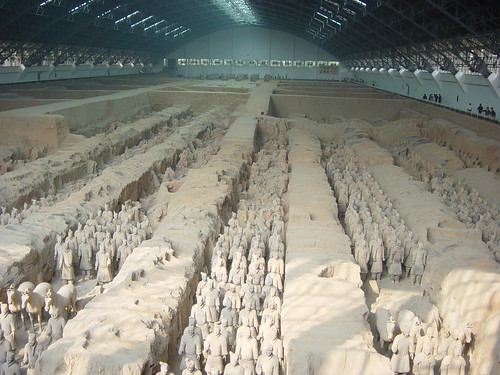
The first row of soldiers in Site 1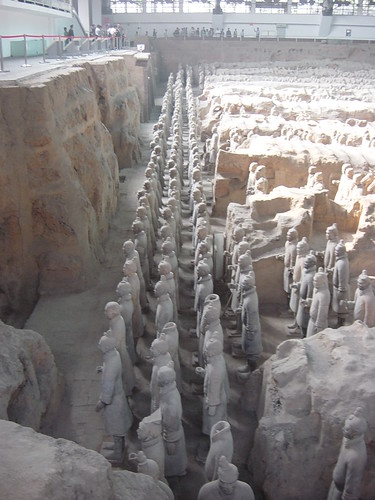
Site 2, and some people restoring it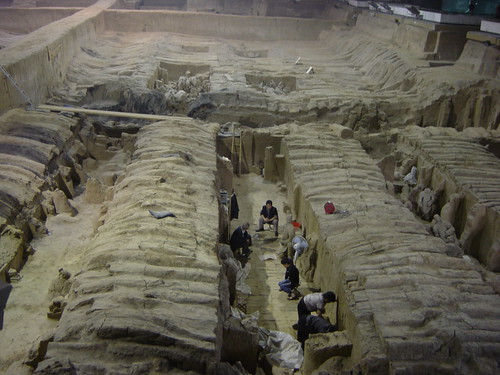
Site 3, supposedly the headquarters for the army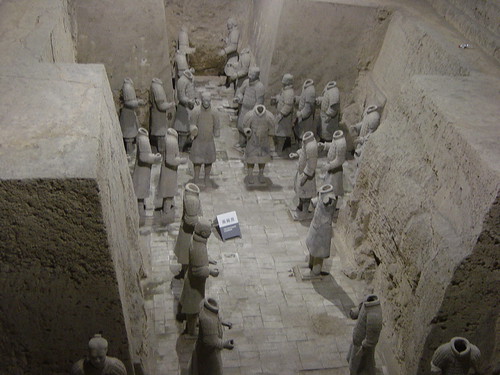
Unearthed but not repaired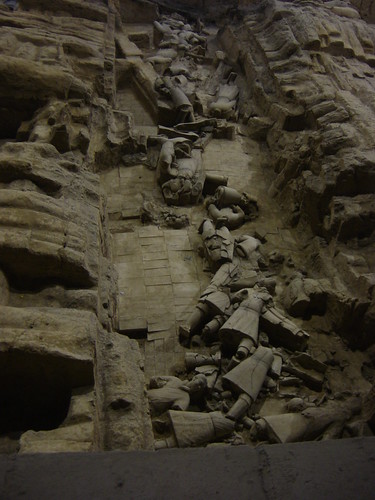
Archer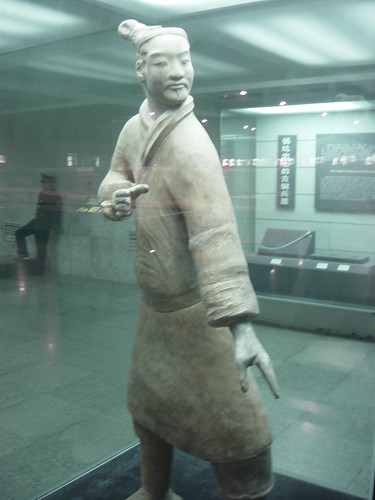
General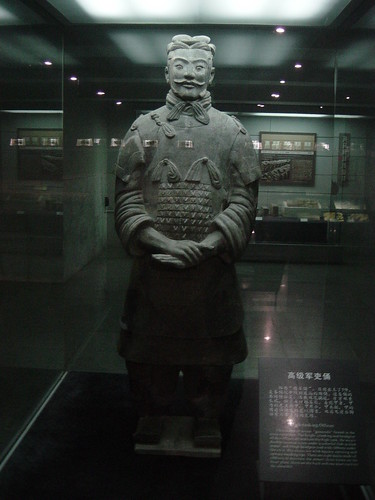
Kneeling archer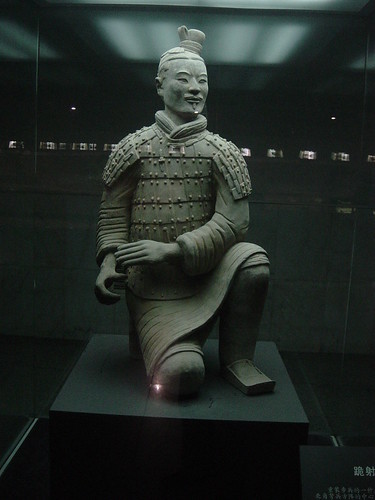
Bronze horses and chariot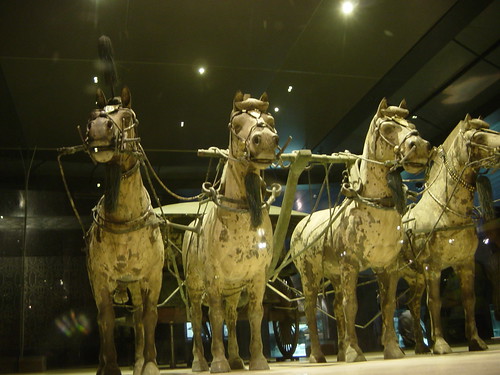
The terracotta warriors are an amazing sight to see, mostly for the immensity of the army and the detail of each one. According to the video, they were made over 38 years by an enormous number of crafstmen, 700,000 according to Wikipedia. They form part of the tomb of the first Emperor of Qin, Qin Shi Huang. He declared himself the first emperor of China and united many different kindoms. About five years after his death, though, his son was overthrown and his tomb, at least parts of it, was destroyed and burned. That's why all the warriors are broke - the roof caved in on them and smashed them.
After visiting the warriors, we went to Li Shan, a famous mountain with a garden at the base of it that had been used by various rulers of China throughout history, and also was the site of the "Xi'an Incident" when Chiang Kai-shek was arrested by his own generals and forced to stop fighting the Red Army, leading to his eventual exile in Taiwan.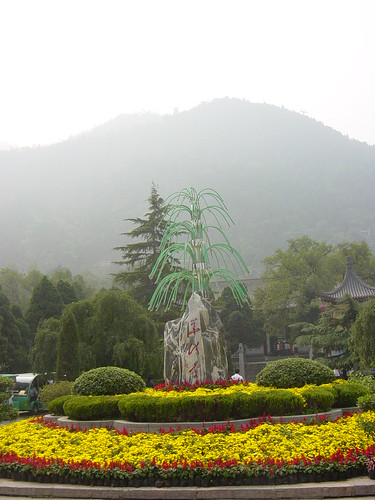
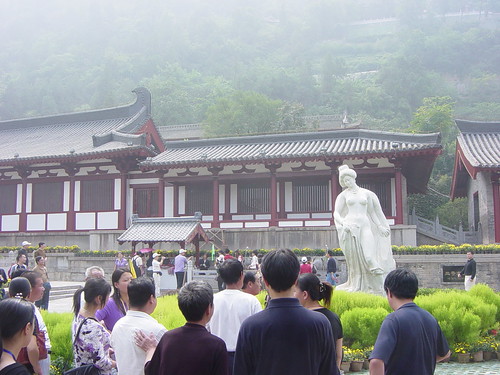
A bath, filled with natural hot springs, built by a Tang dynasty emperor for his lady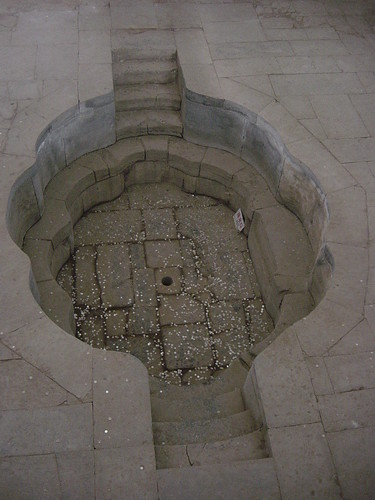
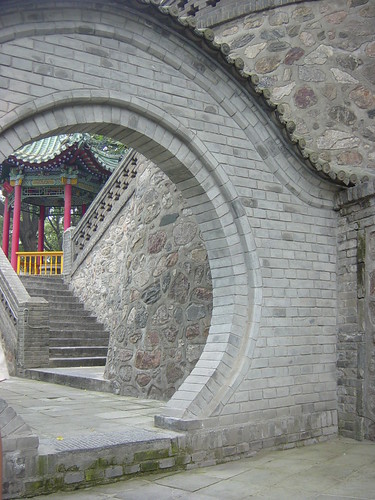
Walking around the park was a nice change from walking around the city, but it was pretty crowded with tourists, and we didn't really go up the mountain very much since we didn't have too much time to spend there. Maybe once the weather cools down a bit more and some leaves start to change colors I'll go back and walk up higher.
Other than that tourist excursion, I haven't been up to anything new. Everything is going well, my Chinese is slowly improving, very slowly, but at least I'm learning. I finally have the text books I need for my classes, so that should help things move along well. The classes I'm teaching are also still going well - it looks like it will be an interesting semester, since my students for the most part seem willing to talk about interesting things, and since it's an oral English class that's really all I need them to do.
Well now it's a bit late here, so I'm going to get some rest. I'll try to write a little more often with some more details about daily life since there are plenty of small differences that I encounter every day.
1 comment:
The Terracotta Warriors are fabulous. Some years ago there was a travelling exhibit in Columbus that included some of the warriors. I was impressed then but I didn't imagine there was anything like the exhibits shown in your pictures.
Gram Schwieter
Post a Comment